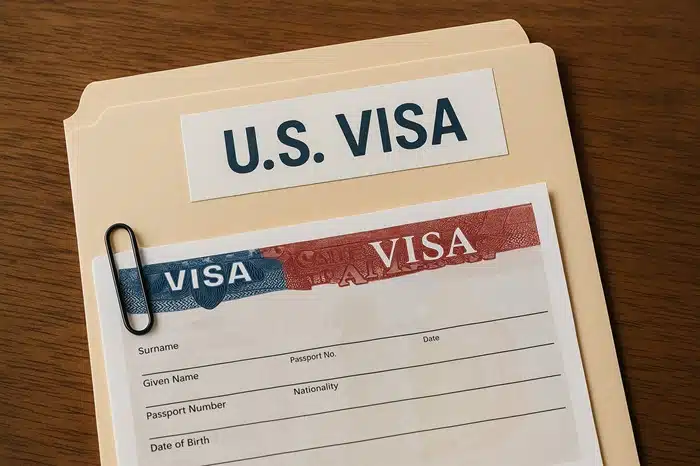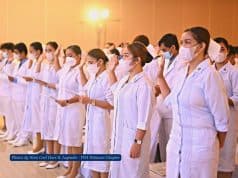For most foreign-educated nurses, especially those from the Philippines, the dream of practicing in the United States begins with a complex immigration process. At the heart of this process lies a critical concept that determines when and how they can move forward. While the path may seem confusing at first, gaining a foundational understanding of this key element is essential to navigating the U.S. immigration system effectively.
This article provides an overview of significant factors that influence a nurse’s ability to live and work in the U.S. This includes recent developments that could affect timelines and eligibility. Whether you are just starting out or already waiting in line, this article is intended to provide clarity and direction as you take the next step towards establishing a nursing career in the U.S.
What Is a Priority Date?
Your priority date serves as your official place in line for U.S. immigration benefits. For employment-based cases, this date is established when your sponsoring employer files Form I-140 after obtaining an approved PERM labor certification. The priority system creates fairness by processing applications in chronological order, but wait times vary dramatically based on visa category and country of origin. Nurses should note that their priority date remains locked in, even if processing rules change later; this date becomes your permanent marker in the immigration queue until you either receive your green card or abandon the process.
EB-3 vs. EB-2 Visa Categories for Nurses
EB visas (Employment-Based visas) allow foreign nationals to obtain U.S. permanent residency through employment. For nurses, the most relevant categories are EB-2 and EB-3. Most foreign nurses enter through the EB-3 visa category, which requires:
- A bachelor’s degree in nursing (or foreign equivalent)
- Valid NCLEX-RN licensure
- An approved PERM labor certification
On the other hand, the EB2 priority date offers a potentially faster path for nurses who:
- Hold a master’s degree or higher
- Can demonstrate exceptional ability
- Have specialized nursing experience
Recent data shows EB-2 priority date processing times running 12-18 months faster than EB-3 for Philippine applicants, making the extra education requirements potentially worthwhile for those who qualify. However, the vast majority of staff nurse positions only qualify for EB-3 sponsorship.
How Long After the Priority Date Becomes Current?
Once your priority date finally becomes current in the visa bulletin, the real work begins. Expect these sequential steps:
- Application Processing (3-6 months): File either Form I-485 for adjustment of status (if already in the U.S.) or begin consular processing through Form DS-260.
- Biometrics Appointment (4-8 weeks after filing): Complete fingerprinting and background checks.
- Medical Examination: Submit Form I-693 with required vaccinations and health screening.
- Final Interview (3-5 month wait): Attend an in-person interview at either a USCIS office or a U.S. consulate.
Total processing after the priority date currently typically ranges from 6-15 months, depending on caseloads at service centers. During this period, nurses should avoid any international travel without advance parole and notify USCIS of address changes immediately.
2024–2025 Updates for Nurses
The U.S. immigration process for nurses is undergoing important changes that may affect how and when applicants can move forward. Understanding these updates is essential for those seeking to live and work as nurses in the United States. This section outlines the most significant developments for 2024 and 2025 that could impact your progress and preparation.
Visa Retrogression
Visa retrogression occurs when the demand for green cards exceeds the annual supply, causing the cutoff dates in the Visa Bulletin to move backward (instead of forward). The U.S. limits the number of employment-based (EB) and family-sponsored green cards issued each year, with additional per-country caps to prevent any single nation from dominating the quota. When too many applicants are eligible, the government temporarily “rolls back” priority dates to manage the backlog. This creates delays for Filipino nurses and other professionals waiting for green cards, as the U.S. imposes annual per-country limits.
Premium Processing Expansion:
To expedite certain employment-based petitions, the USCIS has expanded Premium Processing for Form I-140 (Immigrant Petition for Alien Workers). Eligible applicants (including EB-3 nurses) can now pay a $2,500 fee for 15-day adjudication (down from the previous 45-day processing). This helps employers and foreign workers secure faster approvals, though it does not bypass visa bulletin backlogs.
NCLEX Modernization:
The Next Generation NCLEX (NGN), launched in April 2023, introduced new question formats (e.g., case studies, drag-and-drop, and clinical judgment assessments) to better evaluate nursing competency. International nurses must now adapt their exam preparation, as older study materials may not fully cover the updated test structure. Resources like UWorld, Kaplan, and Archer Review have updated their question banks to reflect NGN changes.
State-Specific Opportunities:
Some U.S. states facing severe nursing shortages are fast-tracking licensure for foreign-trained nurses. For example:
- Texas and Florida offer temporary licenses or expedited processing for nurses with approved immigration petitions (e.g., EB-3 priority dates).
- States like Michigan and New York have also introduced alternate pathways, such as provisional licenses while awaiting full credential verification.
These state-level initiatives help foreign nurses begin work sooner; however, they still require passing the NCLEX and meeting other state board requirements.
Challenges & Practical Tips for Nurses
The priority date waiting period is a critical yet challenging phase for foreign-educated nurses pursuing U.S. permanent residency. Delays in visa processing, changing immigration policies, and strict compliance requirements can create uncertainty. However, by understanding common obstacles and implementing proactive strategies, nurses can minimize obstacles and progress smoothly toward their green card approval.
Common Setbacks
Navigating the U.S. immigration process as a nurse comes with unique challenges that can delay or disrupt your green card journey. This section outlines the possible scenarios that could impact your timeline. Understanding these hurdles early allows you to prepare and minimize risks.
Job Portability Limitations
- Nurses on an employment-based green card pathway (EB-3) are typically tied to their sponsoring employer. Changing jobs before obtaining a green card may require restarting the PERM labor certification process, leading to significant delays.
- H-1B visa holders have more flexibility, but most nurses enter on EB-3 visas, making job changes risky.
Expiring Credentials & Licensing Requirements
- English Test Validity: IELTS/TOEFL scores expire after two years, and retaking them may be necessary if the priority date is delayed.
- NCLEX & State Licenses: Nurses must maintain active licensure in their state of employment. Some states require continuing education units (CEUs) for renewal.
- Visa Screen Certificates: These must remain valid for green card approval, and delays may require retesting or additional documentation.
Family-Related Complications
- Spouses and children (derivative beneficiaries) face separate processing times, sometimes leading to family separation if their applications are delayed.
- If a child turns 21 (“ages out”) before the priority date becomes current, they may lose eligibility as dependents.
Proactive Strategies for Success
While the above issues are common and sometimes unavoidable, careful planning can help you stay on track. This section provides actionable steps to safeguard your immigration process. By adopting these proactive measures, you can reduce preventable delays throughout your application.
Organize & Backup Critical Documents
Lost or expired paperwork can derail your application and cause costly delays.
- Create digital and physical copies of all immigration-related documents (PERM approval, I-140 receipt, priority date notices, Visa Screen, IELTS/TOEFL scores, and license verifications).
- Store backups securely (e.g., encrypted cloud storage + a fireproof safe).
- Track renewal deadlines for passports, visas, and work authorizations (EAD/AP) with calendar reminders.
Monitor Deadlines & Stay Compliant
Expired credentials (e.g., licenses, English tests) can invalidate your eligibility.
- Licensing: Check your state board’s CEU requirements and renew your RN license early. Some states (like California and Texas) mandate specific training (e.g., infection control) for renewal.
- Visa Screen: Ensure your CGFNS or FCCVS certification remains valid; if it expires, you may need to retake exams or submit updated transcripts.
- English Tests: If your IELTS/TOEFL expires, retake it promptly—some states (e.g., New York) accept expired scores for licensure but not for immigration.
Consult an Immigration Attorney Before Major Decisions
A single misstep (e.g., changing jobs or traveling without advance parole) can reset your green card process.
- Seek legal advice before:
-
- Accepting a new job (even within the same health system).
-
- Filing an I-485 (to confirm eligibility and avoid RFEs).
-
- Traveling internationally if your visa status is pending adjustment.
- Discuss backup options (e.g., H-1B cap-exempt petitions for nonprofit employers if EB-3 faces delays).
Leverage Concurrent Filing (If Eligible)
Filing I-485 (adjustment of status) while your I-140 is pending can save months—or even years—of waiting.
- Monitor the Visa Bulletin for “Dates for Filing” to submit I-485 early.
- Include applications for Employment Authorization (EAD) and Advance Parole (AP) to work/travel freely while waiting.
- Note: Concurrent filing is only possible when your priority date is current or nearly current.
Protect Family Members from Delays
Spouses and children risk separation or losing eligibility if processing drags on.
- For spouses: File for their EAD (via I-765) to allow them to work while waiting.
- For children nearing age 21: Consult an attorney about CSPA (Child Status Protection Act) to “freeze” their age based on I-140 approval timing.
- Consider separate petitions (e.g., EB-2 NIW for the primary applicant) if EB-3 backlogs worsen.
Stay Informed & Plan for Contingencies
Immigration policies change frequently (e.g., retrogression, new USCIS fees).
- Subscribe to USCIS updates and Visa Bulletin alerts.
- Join nursing immigration forums (e.g., CGFNS Alliance) for peer advice.
- Save funds for unexpected costs (e.g., RFE responses, premium processing).
Final Thoughts
The green card priority date system remains the cornerstone of immigration for nurses to America. While waits can be lengthy, particularly for Filipino EB-3 applicants, proper preparation and understanding of the process can lead to successful outcomes. By regularly checking the US visa bulletin, maintaining all required credentials, and working closely with experienced immigration counsel, foreign nurses can navigate this complex system. Remember: your priority date represents more than just a place in line – it’s the first step toward your American nursing career.
Official Resources:
- U.S. Visa Bulletin (Updated monthly)
- USCIS Policy Manual



![13 Free Online Continuing Professional Development (CPD) Resources for Nurses [2025] free cpd for nurses](https://rnspeak.com/wp-content/uploads/2020/07/free-cpd-for-nurses-238x178.jpg)




